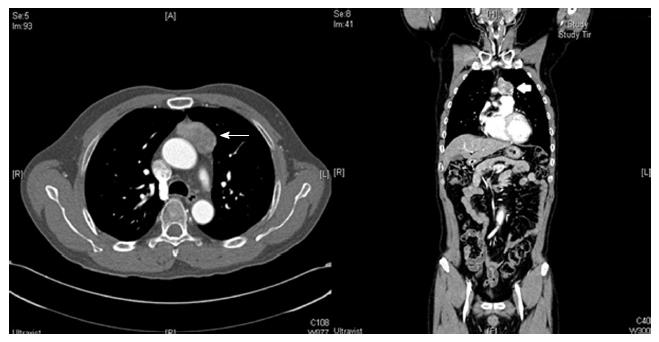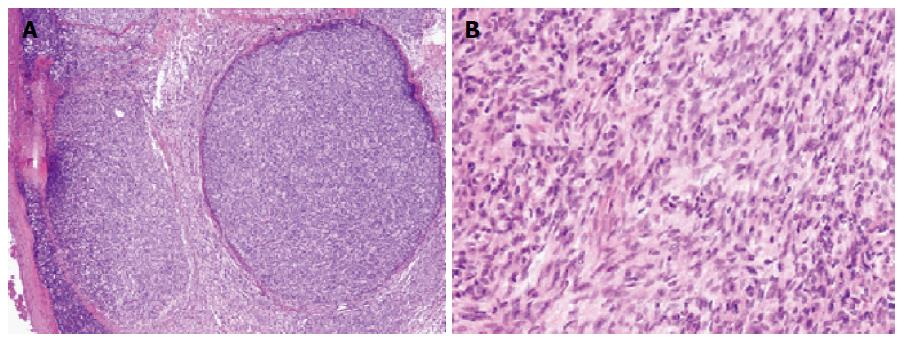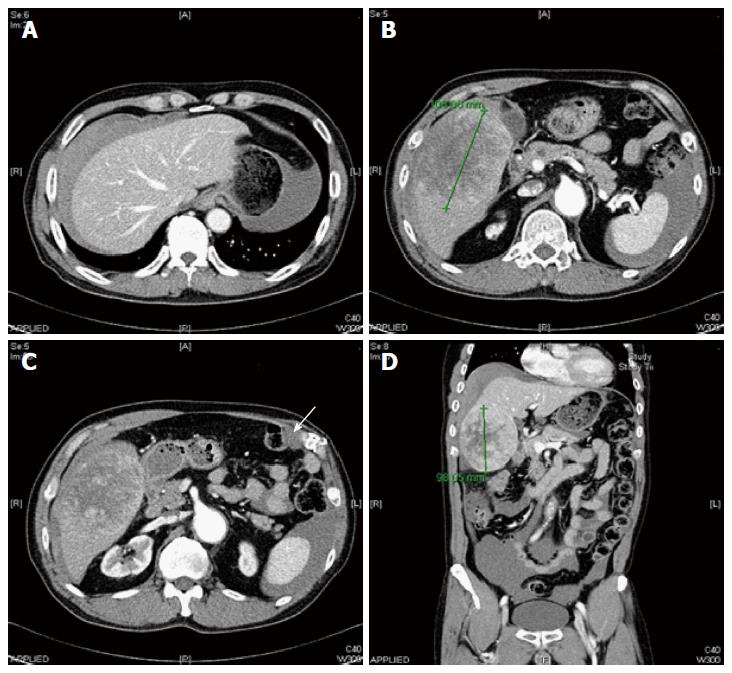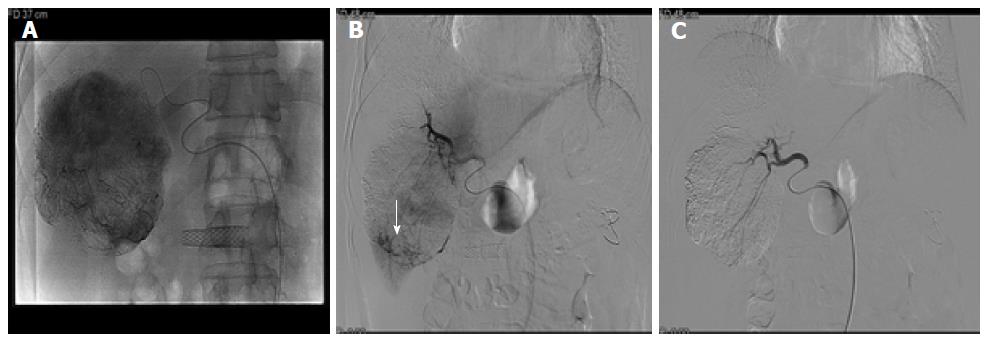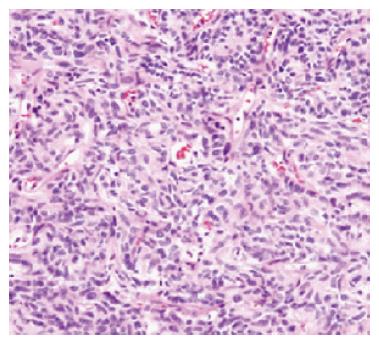Copyright
©The Author(s) 2016.
World J Gastroenterol. Nov 28, 2016; 22(44): 9860-9864
Published online Nov 28, 2016. doi: 10.3748/wjg.v22.i44.9860
Published online Nov 28, 2016. doi: 10.3748/wjg.v22.i44.9860
Figure 1 Computed tomography images.
A mass (maximum diameter, 45 mm; white arrow) is seen anterior to the ascending thoracic aorta. Histological analysis later identified the mass as a thymoma.
Figure 2 Histological analysis of the mediastinal thymoma.
A: A stained section of the mediastinal thymoma (hematoxylin-eosin staining, magnification × 40); B: The type A component is composed primarily of fibroblast-like spindle cells (hematoxylin-eosin staining, magnification × 100).
Figure 3 Enhanced computed tomography images.
A: Large hemoperitoneum is seen around the liver; B: A 10-cm encapsulated mass is seen in S5 and S8 of the liver, and hemoperitoneum is seen around the spleen; C: A 2.3-cm nodular lesion is seen in the right upper quadrant of the abdomen adjacent to the left transverse abdominal muscle (white arrow); D: Coronal view of the large hemoperitoneum with a liver mass.
Figure 4 Angiography images.
A: Digital subtraction angiography shows a large ruptured hypervascular tumor with staining at the right hepatic lobe during transarterial embolization; B: Active contrast leakage (white arrow) is seen; C: Selection of the right hepatic artery with a mixture of adriamycin (50 mg) and lipiodol (20 mL). The tumor staining disappears after transarterial embolization.
Figure 5 Histopathological analysis of the abdominal wall mass.
The tumor is composed of fibroblast-like spindle cells (thymoma type A, metastatic).
- Citation: Kim HJ, Park YE, Ki MS, Lee SJ, Beom SH, Han DH, Park YN, Park JY. Spontaneous rupture of hepatic metastasis from a thymoma: A case report. World J Gastroenterol 2016; 22(44): 9860-9864
- URL: https://www.wjgnet.com/1007-9327/full/v22/i44/9860.htm
- DOI: https://dx.doi.org/10.3748/wjg.v22.i44.9860









